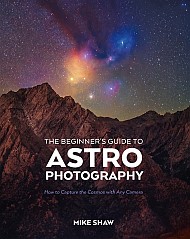Astronomy
AI Slop Is Spurring Record Requests for Imaginary Journals
The International Committee of the Red Cross warned that artificial intelligence models are making up research papers, journals and archives
How worried should you be about spending too much time on your phone?
How worried should you be about spending too much time on your phone?
Chernobyl’s Shield Guarding Radioactive “Elephant’s Foot” Has Been Damaged for Months
The site of the world’s worst nuclear disaster remains damaged, but so far, radiation levels outside the plant have not increased, according to officials
Watch Lava From Hawaii’s Kilauea Volcano Obliterate a Webcam
Hawaii’s Kilauea, one of Earth’s most active volcanoes, sent lava fountains spewing into the air, obliterating a U.S. Geological Survey camera
Tsunami Warnings Issued in Japan after Magnitude 7.6 Earthquake
Japanese officials said to expect a tsunami of up to 3 meters in some areas after a magnitude 7.6 earthquake struck off the east coast of Japan
What the family drama of interbreeding polar and grizzly bears reveals
What the family drama of interbreeding polar and grizzly bears reveals
Vitamin K Shot Given at Birth Prevents Lethal Brain Bleeds, but More Parents Are Opting Out
Vitamin K injections have prevented deadly brain bleeds in infants for more than 60 years. New research shows refusal rates have recently jumped nearly 80 percent
Extreme heat hampers children’s early learning
Extreme heat hampers children’s early learning
Too busy to meditate? Microdosing mindfulness has big health benefits
Too busy to meditate? Microdosing mindfulness has big health benefits
The Primordial Black Hole Saga: Part 1 - The Dark Matter Mystery
Do I really need to go over the evidence for dark matter again? Okay, fine, for those of you in the back who weren’t paying attention the first time.
Infrasound Tech Silences Wildfires before They Spread
A new sound-based system could squelch small fires before they grow into home-destroying blazes
Inspired by Schools of Fish, This Magnetic Material Swarms to Eat Carbon Dioxide
Removing, or “scrubbing”, carbon dioxide from the air of confined spaces is a critical component of any life support system on a spacecraft or submarine. However, modern day ones are energy intensive, requiring temperatures of up to 200℃ to operate. So a research lab led by Dr. Hui He at Guangxi University in China has developed what they call “micro/nano reconfigurable robots” (MNRM) to scrub CO2 from the air much more efficiently. Their work is described in a new paper in Nano-Micro Letters.
Vaccine Controversies and Measles Outbreaks, Space Pollution, Puppy Power
Vaccine controversies, space pollution and puppy power.


